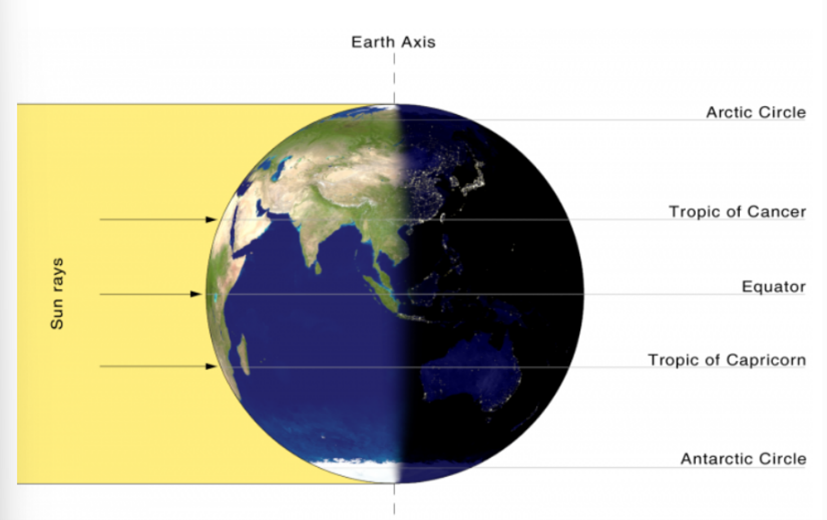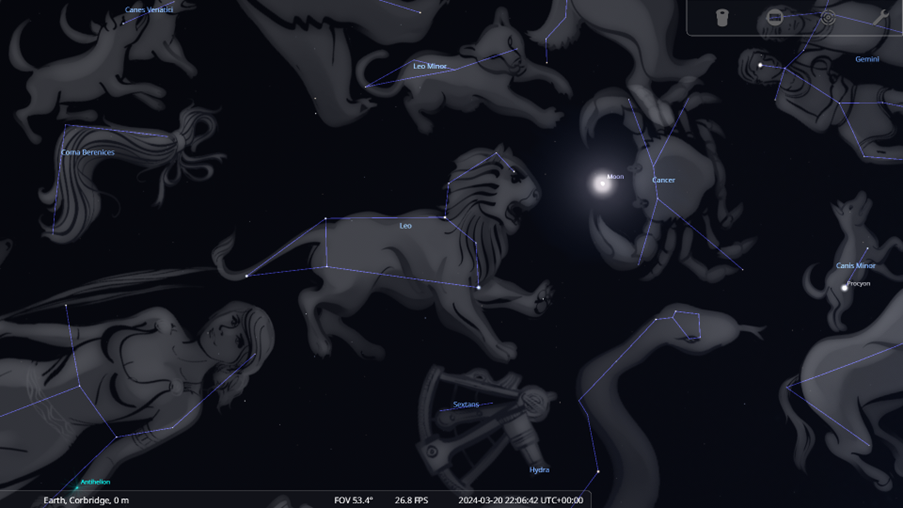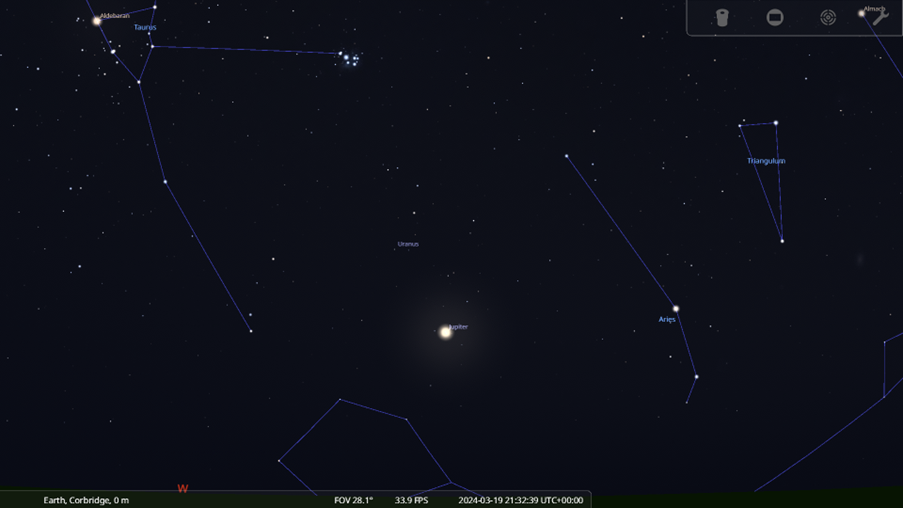What's Up? March 2024
Spring is almost upon us! As day and night start to equalise, let’s take a look at what’s parading across our skies this month.
Spring Equinox
Tuesday 19th March marks the first day of Spring, and the days getting longer than the nights again. A sad day for us Astronomers in the North! This is the day that Earth is neither tilted towards nor away from the Sun, so both the Northern and Southern Hemispheres get approximately the same amount of night and day. Equinox derives from the Latin for "equal night".


Figure 1: The Earth not being tilted towards or away from the Sun meaning equal illumination for all. Images from TheAlmnac.com and timeanddate.com
Constellations
As Spring approaches, Leo the lion is coming back. This glorious constellation is sometimes described as a mouse, or a coat-hanger but is a really easy spot in the southern Sky this month.

Figure 2: Leo the lion and the moon in the High Southern sky March 20th 10pm.
As the moon waxes up to a full moon it eventually will pass through Leo, making it look like a cat playing with a ball of string. A good chance to add this big cat constellation to your spotting repertoire.
Planets
Venus still precedes the morning sun, though with the Sun catching up you’ll have to get up earlier to catch it around 6am to 7am this month.
Jupiter is in prime position throughout the night over the course of the Month, moving through Aries. However, Saturn, who has been making a nice double act with Jupiter for planet gazing this winter, is moving on. It is barely visible before passing over the horizon around sunset.
If you’ve got some binoculars then find Jupiter and trace up, trailing not too far behind should be Uranus, a little pale blue dot like us, as shown in the photo below.

Figure 3:Jupiter and Uranus in the western sky, March 19th, 9:30pm
Moon Phases
3rd March: Half Moon
10th March: New Moon
17th March: Half Moon
25th March: Full Moon
The full moon this month is known as the Worm Moon. The origins come from multiple cultures such as Native American and European. It is often thought to have derived from earthworms that spring birds start to feast on, but it may have actually originated from the beetle larvae that emerge from the thawing of trees in the spring.
Clear skiesd and happy stargazing!
















